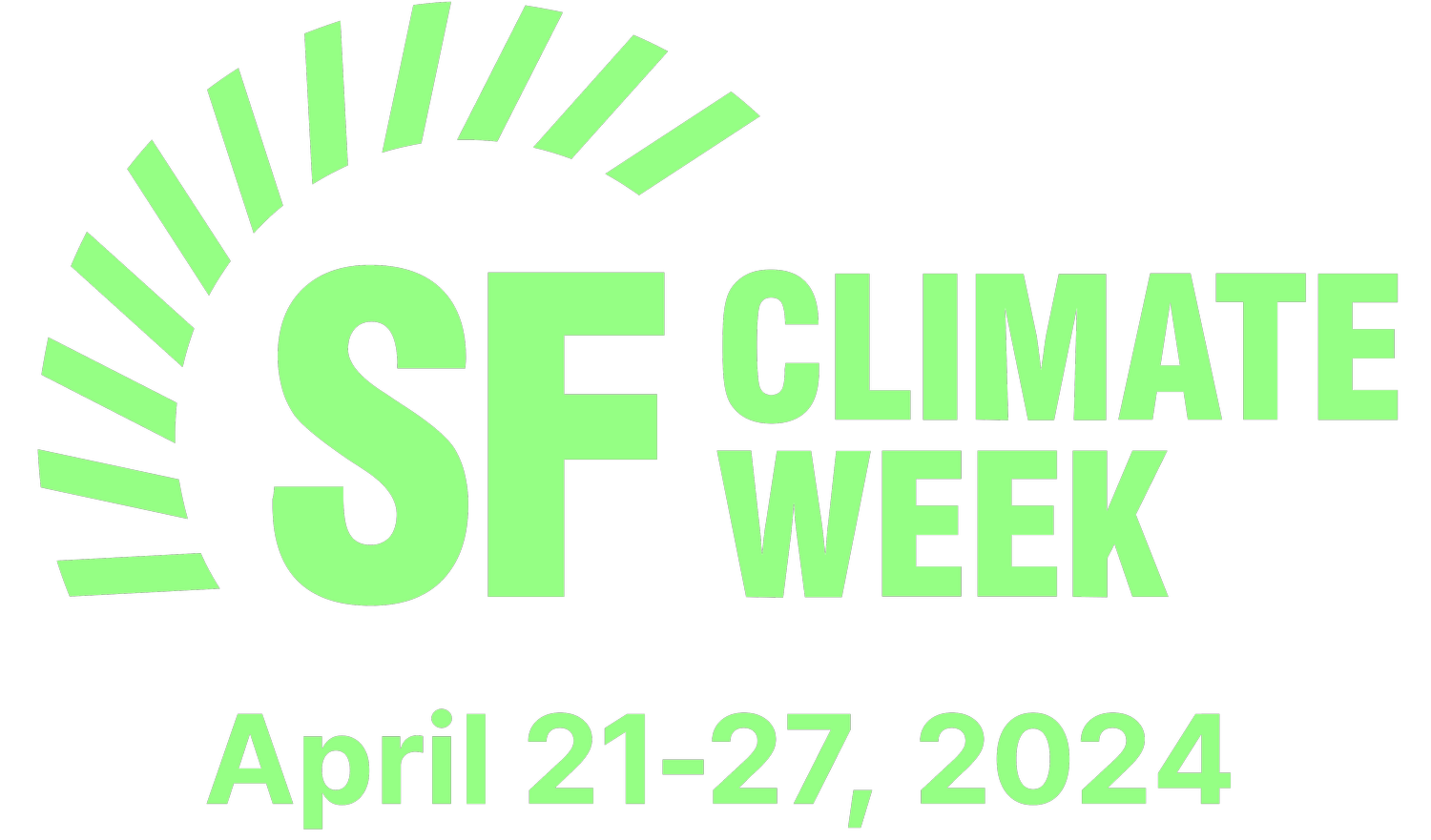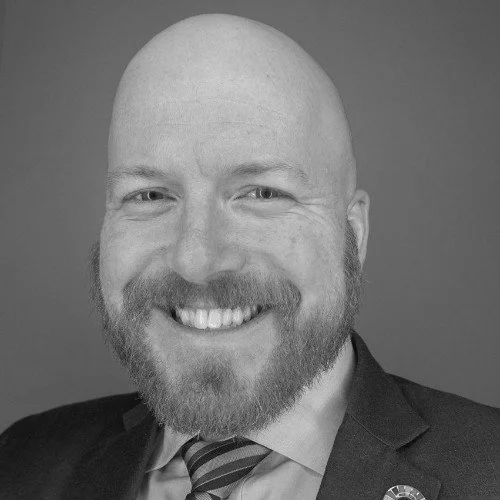Spotlight: Interview with Atmos Financial Co-Founder & CEO Ravi Mikkelsen
Atmos Financial is at the forefront of climate-positive banking – having funded over 12,000 kW of solar across the U.S. Atmos is working to create a swift global transition to a clean and fair economy, by directing funds from bank accounts and solar loans towards renewable energy projects. Here at Climatebase and SF Climate week, we support Atmos's dedicated approach to accelerating the transition to a cleaner economy.
We sat down with Co-founder and CEO Ravi Mikkelsen to learn more about how Atmos Financial leverages bank deposits to finance climate-positive infrastructure like clean energy, electrification, and regenerative agriculture.
1. In your words, what does Atmos do and how is it a solution to the climate crisis?
First and foremost, Atmos is a climate tech company. To put us into a box, we are climate FinTech, but at our heart, we're a climate tech company that goes beyond finance to facilitate a swift global transition to a clean and fair economy.
We leverage capital, specifically bank deposits and bank loans, to accelerate the clean energy transition. We provide lower-cost financing for the deployment of solutions like rooftop solar, electric vehicles, and heat pumps so that these technologies can be more affordable and accessible for all.
Atmos allows individuals, nonprofits, and mission-aligned businesses to open bank accounts that fund climate positive infrastructure. Your money is FDIC insured through our bank partner Five Star Bank, easily moved into an Atmos checking or savings account, and can actually make an environmental impact.
Atmos web and mobile apps give you the functionality that you'd expect from a modern bank account. On top of all of that, you get the satisfaction that 100% of your deposits with Atmos are funding climate-positive assets.
Those deposits sit with our regulated bank partner, and are transferred to a network of banks to then lend out for climate positive solutions. Banks use our software to manage their lending portfolio.
Solar loans are made available by our network of solar installers and HVAC contractors through our financing software, and are always baked into the final project costs. To sum it up, we're a climate technology company that builds software for multiple parties with one goal in mind – to accelerate the transition by bringing lower cost capital to the market.
2. What inspired you to work on this solution? Where did the idea come from?
I've been in climate and clean energy for over two decades. I had an epiphany at my freshman orientation at the University of Washington where I realized that my mission in life was to help the world transition off of fossil fuels. I became a materials engineer doing research into hydrogen fuel cells and PV cells back then, and started a biodiesel company after graduation. After shutting down this project, I started working as a researcher at a private equity firm – learning firsthand how they would say ‘no’ to financing great projects solely based on investment criteria.
The projects may have been too small or didn't give quite a good enough return and I began to see the power of capital and capital decisions. It's the Golden Rule: He who has the gold makes the rules.
It wasn’t until many years later though that I realized finance was my Archimedes lever. Archimedes famously said, “Give me a lever long enough and firm ground to stand upon and I can move the world.” In 2015, through the US Department of Energy’s Sunshot program, I made the switch to working on capital deployment.
Fast forward to late 2018, the IPCC released a report that essentially said, if we want to stay below one and a half degrees centigrade, we need to spend $6 trillion per year between 2016 and 2050. I asked myself “Who's got that much money?” It's the global banking sector. So I started working on this in 2019 and shortly after, I met my co-founder, Pete, who worked as a banker financing renewable energy projects. We wondered how do you get banks to move faster and at the same time also give people the power to have an impact on climate change with their deposits.
We’re not trying to become the biggest “bank” in the world and finance the entire transition ourselves. Instead, we want to help 1,000 banks, or even 10,000 banks to shift a portion of their portfolio to funding the transition, and in so doing, we’ll have a much larger impact, sooner.
3. Transparency is a big part of your product. Why is that important to you and what role does it play in the future of climate banking?
Transparency is not only a critical part of our model but of the transition itself. People don't know what their money does. They don't know the true impact of what they're buying and have lost faith in so many “green” finance companies because there has been too much greenwashing across the industry.
We wanted to assure people that what we're doing is legitimate by showing people the projects that their money is funding. We show the calculations behind our impact numbers, the assumptions, and the data sources. It's not just an asterisk — a bold claim that we make on the marketing site where you can't really track the numbers.
Our solar loan programming is changing how residential pricing is offered as well. Most of the industry charges a finance fee — it’s called the dealer fee, which is rarely exposed to the borrower. The incumbent model is to charge a high dealer fee and low, “teaser” rate to make the financing appear to be a steal of a deal. The dealer fee is charged to the installer and then it gets wrapped into the price of the total system price that the person is borrowing money for.
We expose the fee that we charge which is currently 80-90% less than the incumbent lenders. Instead of a teaser rate with a high fee, we give a very low fee with a fair rate through our community bank and credit union partners to make the overall cost lower for borrowers. By doing that, we bring down the total cost of the system and thus the electricity produced. In order to achieve our country’s potential for how quickly we move off of fossil fuels, we need to reduce the cost of residential solar by roughly half and cutting financing costs is the best place to begin achieving that.
If somebody goes solar, they realize the cost of their fuel is now electricity. If you bring the cost of the electricity down, now driving their EV is cheaper, running their heat pump is cheaper, and cooking on their induction stove is cheaper. Reducing the cost of solar financing speeds up the transition — not just for solar, but every follow-on product of electrification that follows.
4. How much does the average consumer bank client currently invest in fossil fuel projects without their knowledge?
For every dollar you deposit, something like 10 cents goes to fossil fuel extraction, depending on which big bank you're with and even more goes to consumption, which is even harder to measure.
That said, every community bank and credit union also funds fossil fuels in some fashion as well. They funded people's homes and people's homes burn fossil fuels. They funded auto loans and up until a few years ago, really didn't have much, if any, electric vehicles or non-fossil fuel burning vehicles. So to say any existing bank is fossil fuel free is not exactly true because they're still funding the consumption through home mortgages, commercial mortgages and vehicle financing.
What most people mean when they say fossil fuel free banking is that they're not funding the extraction of fossil fuels — these hundreds of millions or billions of dollars projects, which only a few entities are large enough to be able to participate in. Simply by the nature of their small size, most community banks and credit unions can’t fund those types of projects. So while they may not be fossil fuel free, community banks and credit unions are a vital part of our economy and of their local economies to keep small businesses and home financing accessible to more people.
I wish that there were many climate-positive banking options in the US – we need more of us out there. We need more banks and more credit unions shifting where their money goes, becoming climate positive.Because of their regulated nature, they may not be able to be to 100% climate-positive like Atmos, but they can move beyond “fossil-free” and start to have real impact. This is what Atmos does. We help them to put more of their money into climate-positive assets and change the impact of their portfolio without needing to hire their own team to do it themselves.
5. What are some of the challenges of getting someone to switch to a climate-friendly bank?
A bank account is a high consideration product. Many people, when they open accounts with us, will say “this is my second bank account in 30 years. My parents opened an account for me when I was little at the bank down the street and I've had the same one since.” Most people only get to pick one of the Big Four. And it's wild because the banks will spend so much money to get somebody in because once they've got them in, it's really hard for people to leave.
One thing that we really emphasize is the ease of switching where you save. Most people’s checking account is attached to dozens of different products so they think it's going to take them multiple 24 hour periods to change them all over, and since they don't have that much free time they just won't do anything.
But, if you've got two minutes to apply, and then another five minutes to fund your savings account then you could have a pretty significant impact with just that very small amount of effort. And since the national average for savings rates is something like 0.6%, we're going to be paying you a lot more than you're getting right now. You're earning more, you're having an impact and you're only taking a few minutes out of your day. You can use Atmos on your phone, you can use it on your computer. Once you have your savings account setup, if you want to keep going, slowly transition the rest of your stored checking or debit payments over weeks or months and make it easeful.

